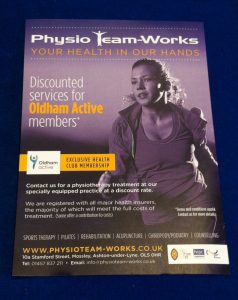Golf requires much more athletic ability than many imagine
Golf is a sport with many health and wellbeing benefits. A reported 60 million people of all ages play golf across the world, sometimes into their 80s and 90s.
The health benefits have been widely reported in recent years with an 18 hole round amounting to 6-8 km of walking, requiring over 8,000-12,000 steps and a calorie burn of 1,500.
However, golf can be very demanding; requiring strength, endurance, explosive power, flexibility and athletic ability to perform a movement that produces some of the fastest club head and ball speeds of any sport.
The effect of these repeated large forces on the body can lead to many different types of injuries, which are often specific to certain areas and sides of the body in golfers, depending on their lead side.
Much research has been done on the types and likelihood of injuries experienced by golfers with the main areas of the body prone to injury being the lower back, shoulder, elbow, wrist and hips.
Below, European Tour consultant physiotherapist Nigel Tilley explains some of the common golfing injuries and how physiotherapy can help get you back on the green.
Wrist injuries – Extensor Carpi Ulnaris (ECU) injury
There are a large range of common wrist injuries in golf – we will concentrate on one main area of problem: Extensor Carpi Ulnaris (ECU) injury.
What is it?
The ECU is a skeletal muscle that extends and adducts the wrist. It has to work very hard during the golf swing and is highly prone to injury, which can be caused by high force trauma (hitting a tree root or thick grass), rapid increase in loading, continued excessive loading and technique faults.
How does physiotherapy treat this type of injury?
This type of injury will often require ‘load modification’ with more traumatic sudden onset injuries requiring immediate removal of load and PRICE protocol (protection, rest, ice, compression and elevation) or POLICE (protection, optimal loading, ice, compression, elevation). The aim here is to reduce the bleeding and swelling from the injury site if severe tissue disruption, such as a partial or full rupture, has occurred.
Lower back injuries – Non-specific low back pain (NSLBP)
What is it?
Lower back injuries account for roughly 30% of all golfing injuries, with poor technique and lack of flexibility in the mid spine and hips possible causes. Often it presents as an aching and discomfort on moving into certain positions and doing certain activities. However, the soreness and stiffness that people often present with is called ‘non specific’ as it is not usually clear which structure is causing the problem/pain.
How does physiotherapy treat this type of condition?
Trying to remain active and avoiding extended periods of rest is important in people with NSLBP. Whilst it may be a good idea in the very initial stages of the problem to reduce or avoid significant movements or activities that aggravate the symptoms, it is a good idea to keep mobile and try to do stretches and exercises that relieve the symptoms and promote normal movement. These are often specific to each individual and your physio will discuss the best options for you. Often in the initial phases the use of heat through hot packs and baths can help as well as manual therapy treatments, soft tissue massage, TENS and advice on the best ways to lift, bend, sit and move in out of the car and bed.
Elbow injuries – Tennis elbow (lateral epicondylitis)
What is it?
Tennis elbow is common in golfers, who are more likely to suffer from injuries to the outside of the elbow region, rather than ‘golfer’s elbow’ which affects the inside. In general the tendons do not show signs of inflammation but rather angiofibroblastic degeneration, collagen disarray and hypoxic tendon degeneration. This often occurs due to rapid increase in loading and or continued excessive loading due to training or technique faults that the tissues are unable to adapt to.
How does physiotherapy treat this type of condition?
The type of physiotherapy management will depend on the stage of the problem and your individual presentation. Often this type of injury will require ‘load modification’ with more sudden onset injuries requiring immediate removal of load and PRICE protocol (protection, rest, ice, compression and elevation) or POLICE (protection, optimal loading, ice, compression, elevation).
Increasing the ability of the tissue to tolerate loads and re-model can be achieved through structured exercises, which your physiotherapist will be able to advise on, depending on the stage and severity of your presentation.
Other treatment techniques include the use of manual therapy to the elbow and associated tissues and structures as well as devices called epicondylitis clasps and taping techniques that can help to offload the injured area to help it recover.
Shoulder injury – Rotator cuff injury
The shoulder is a complex joint and there is a large range of injuries that can occur within it and its structures. We will concentrate on the rotator cuff.
What is it?
The rotator cuff is a group of 4 muscles in the shoulder that are involved in movements and control of the shoulder joint. There are two main causes of injury to this structure, acute trauma and degeneration. The amount of stress needed to cause an injury to the rotator cuff tendon will often depend on factors such as the person’s age, general health and underlying condition of the tendon prior to the stress elicited on the tissue. Tears can occur from injuries such as a fall onto the arm, sudden lifting or rapid movement of the arm (such as in the golf swing) or deceleration of the club head suddenly when unexpected (hitting a tree root or getting the club head stuck in thick rough). Repetitive movements of the golf swing combined with poor technique and/or flexibility and control issues can lead to injuries to the shoulder and rotator cuff.
How does physiotherapy treat this type of condition?
The type of injury, its severity and stage will affect the physiotherapy management of the condition and the time of recovery. TENS, manual therapy and acupuncture are techniques that can help with pain relief. The aim of physiotherapy will be to return optimum function and control to the shoulder complex through structured exercises rehabilitation. Physiotherapists often use taping techniques to also help in the treatment of shoulder injuries. Advice on ergonomics, activity and lifestyle can help identify ways to reduce positions and aggravating factors that may slow the recovery or worsen the injury.
Conclusion
To conclude, golf requires much more athletic ability than many imagine and the consequences of this mean many people suffer injuries through poor general conditioning, lack of warm up, poor technique and practice and playing habits.
But with regular conditioning, improvement in technique, warm ups and structured practice the improvements in a golfer’s performance and reduction in injuries can be significant. Your physiotherapist can help you with this as well as provide you with effective treatment should you suffer with any injuries.




